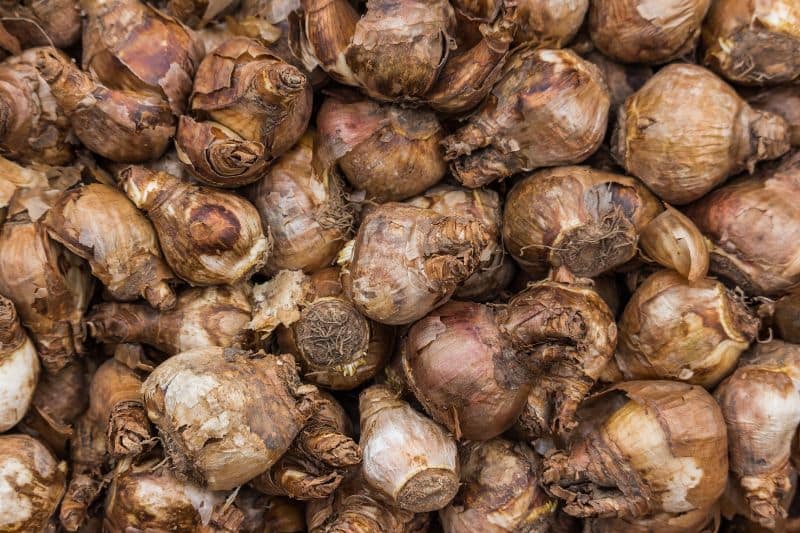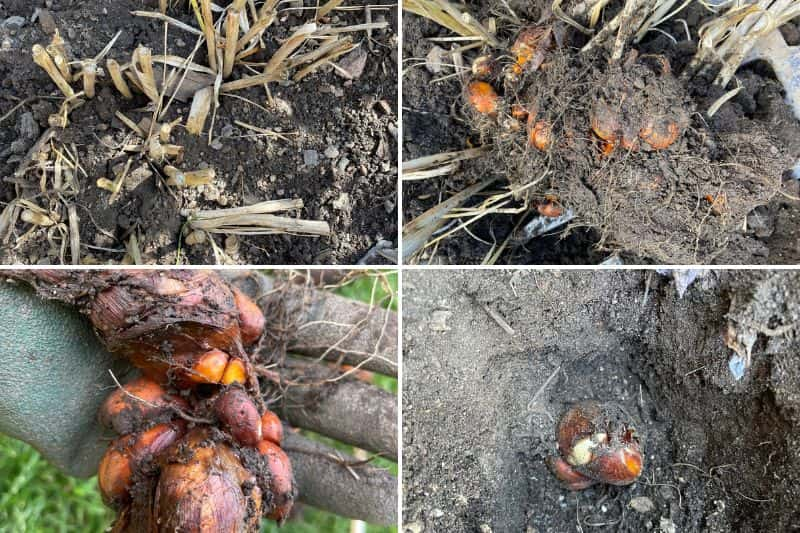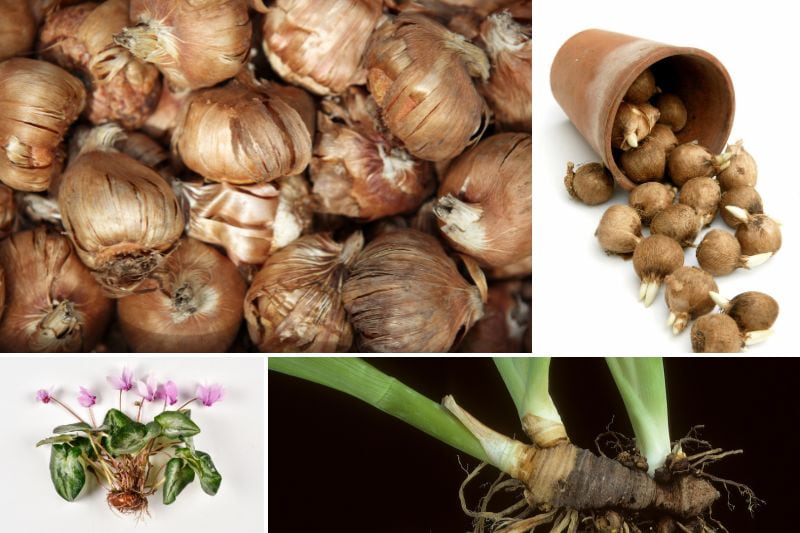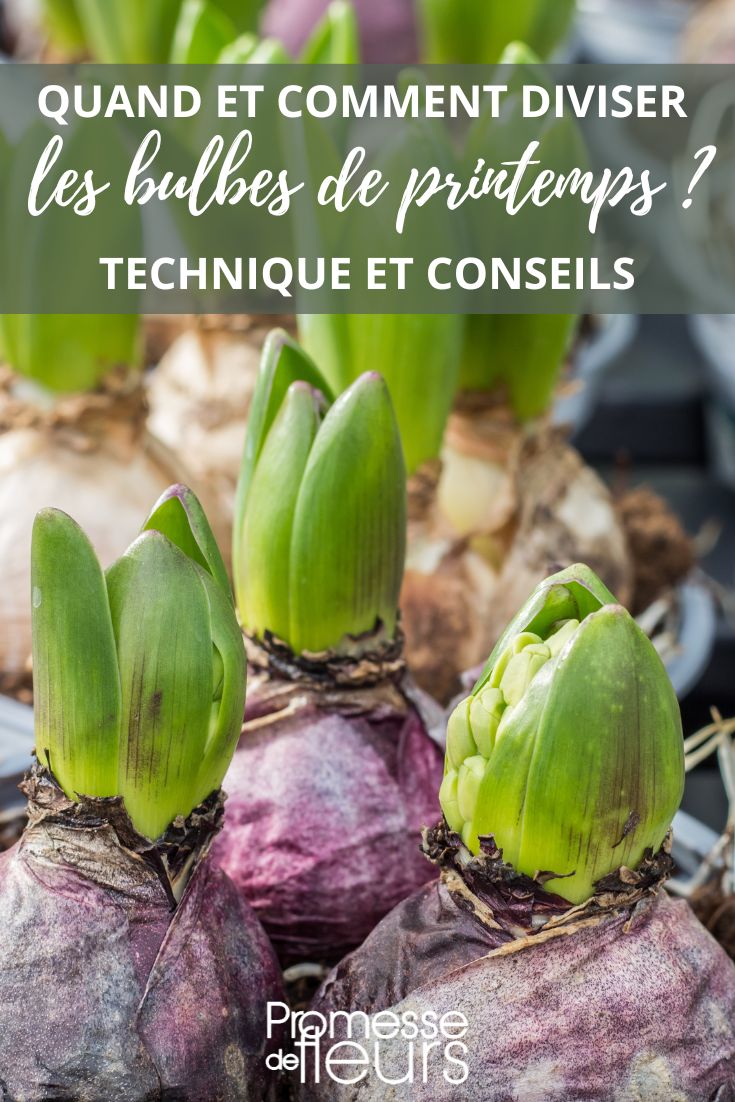To emerge from winter, what could be more beautiful than the flowering of spring bulbs! With their vivid colours, spring bulbs brighten garden from February for some and through the onset of summer. To bring forward this flowering, daffodils, tulips, crocuses, lilies and iris, snowflakes and chionodoxas... are planted from autumn. Each year they return unfailingly, ever more beautiful and more floriferous.
To multiply endlessly and obtain new young plants, or to rejuvenate and renew a clump, dividing spring bulbs is often necessary. While division principle remains the same, method of dividing bulbs can vary according to species.
Let’s discover together how to divide bulbs, corms, tubercles or rootstocks of the various bulb plants that enliven beds, borders and pots in spring.

Different spring bulb plants
Practically speaking, a bulb is the fleshy base of a plant that serves as a food reserve. Spring bulbs benefit from a winter dormancy period that allows them to store nutrients needed for their growth and flowering. These bulb plants are divided into three groups:
- True bulbs: they have fleshy scales forming concentric rings. Each year the bulb enlarges by adding scales and by forming bulblets. This category includes daffodils, hyacinths, tulips, fritillaries, lilies, snowflakes, Dutch iris...
- Corms are formed of a single solid mass rather than nested scales. Dried leaves protect them from damage. This category includes crocuses,
- Rootstocks are swollen underground stems. Buds emerge from the sides or top and roots from the base. Most rootstocks are segmented. Among rootstock plants, Iris germanica can be cited
- Tubercles are underground stems of irregular shape with firm flesh. They enlarge each year. This category of spring bulb plants includes anemones and cyclamens.
Depending on bulb type, division will be slightly different.
When to divide spring bulbs?
Overall, these bulb plants multiply naturally year after year. However, every 3 to 5 years it is recommended to divide them to ensure longevity or to renew planting. It is also a perfect opportunity to install favourite spring bulbs elsewhere in garden or to share with friends or neighbours.
Division does not occur at exactly the same time depending on bulb type. Thus, true bulbs, corms and rootstocks are multiplied after flowering when foliage has completely yellowed and collapsed to soil. From that point bulbs begin dormancy to prepare for next flowering. Division therefore takes place from May–June to September depending on species.
In contrast, tubercle plants are usually divided at end of winter, generally in March, when buds turn into young shoots.
Some precautions before dividing bulb plants
Good hygiene is essential at all stages of division. It affects establishment and survival of bulbs:
- Clean cutting tools with methylated spirits before, during and after use. This is best way to avoid risk of disease spread
- Sharpen all blades carefully that will be used to minimise wounds to bulb tissues
- Wash thoroughly all pots and planters that will receive bulbs before filling with potting compost
- Keep bulb pots in a cool, airy place (but frost-free)
How to divide true bulbs and corms?
Most true bulbs and corms of daffodils, hyacinths, tulips, snowdrops, nerines... produce bulblets, i.e. bulbs in formation. Two division techniques are possible :
Division of clumps
- Lift the dense clump with a garden fork or spade, taking care to push tool sufficiently deep. Each clump should contain mature bulbs or corms and bulblets, that is bulbs in formation
- Divide clumps as you would perennials by separating by hand into small clumps, then into individual specimens
- Clean soil from bulbs and discard any that are damaged
- Replant fragments of bulbs and bulblets immediately at depth required for each species. Sophie explains everything in this article: Spring bulbs: depth guide.
Division of bulblets
- Lift the clump with a garden fork
- Gently detach all bulblets from the old bulb. Each bulblet must retain a section of the basal short stem on which roots develop to enable growth
- Replant bulblets elsewhere in garden or into new pots or planters at a depth equivalent to two or three times their size, tip facing upwards
- Replant old bulbs. You can also keep them to plant in autumn after cleaning off soil
Bulblets will take at least two years, sometimes three, to develop properly and to flower.

How to divide tubercle plants?
As a reminder, tubercles are underground stems that produce buds, new shoots and roots.
- Lift the clump with a garden fork
- Gently shake tubercle to remove soil
- Divide the stump into several pieces with a sharp knife, ensuring each piece includes a shoot or a bud
- Spray a fungicide on exposed areas
- Plant into a pot during frost periods or in open ground if frost risk is low
- Water regularly.
How to divide rootstock plants?
Rootstocks are also underground stems that grow horizontally. These include, among others, irises.
- Lift the clump with a garden fork
- Remove soil by shaking the stump
- Identify young rootstocks at the edges of the clump
- Cut these rootstocks at the base of the leaves, between two shoots, into sections. Each section should have a few leaves or shoots
- Cut leaves in half
- Plant sections so they remain just level with surface
You can replant the parent rootstock but it is often less floriferous because it is ageing.
Multiplying lilies by propagation by cuttings of scales
Lilies arise from bulbs composed of numerous scales, each of which can potentially produce a new young plant. In summer, lift the bulb and carefully detach each scale while retaining a piece of the basal short stem.
Then plant each scale in a mix of three parts sand to one part potting compost. After about twelve weeks each scale will produce a bulblet.

































Comments